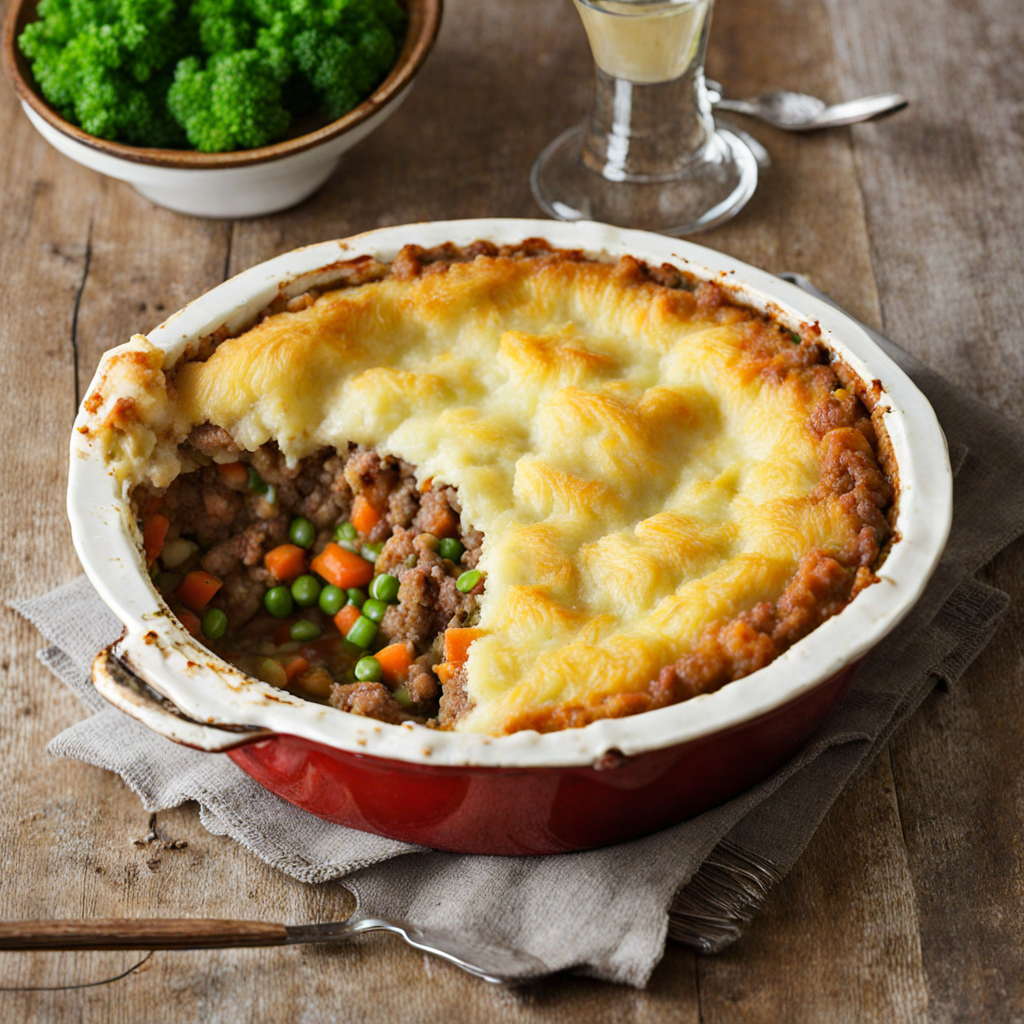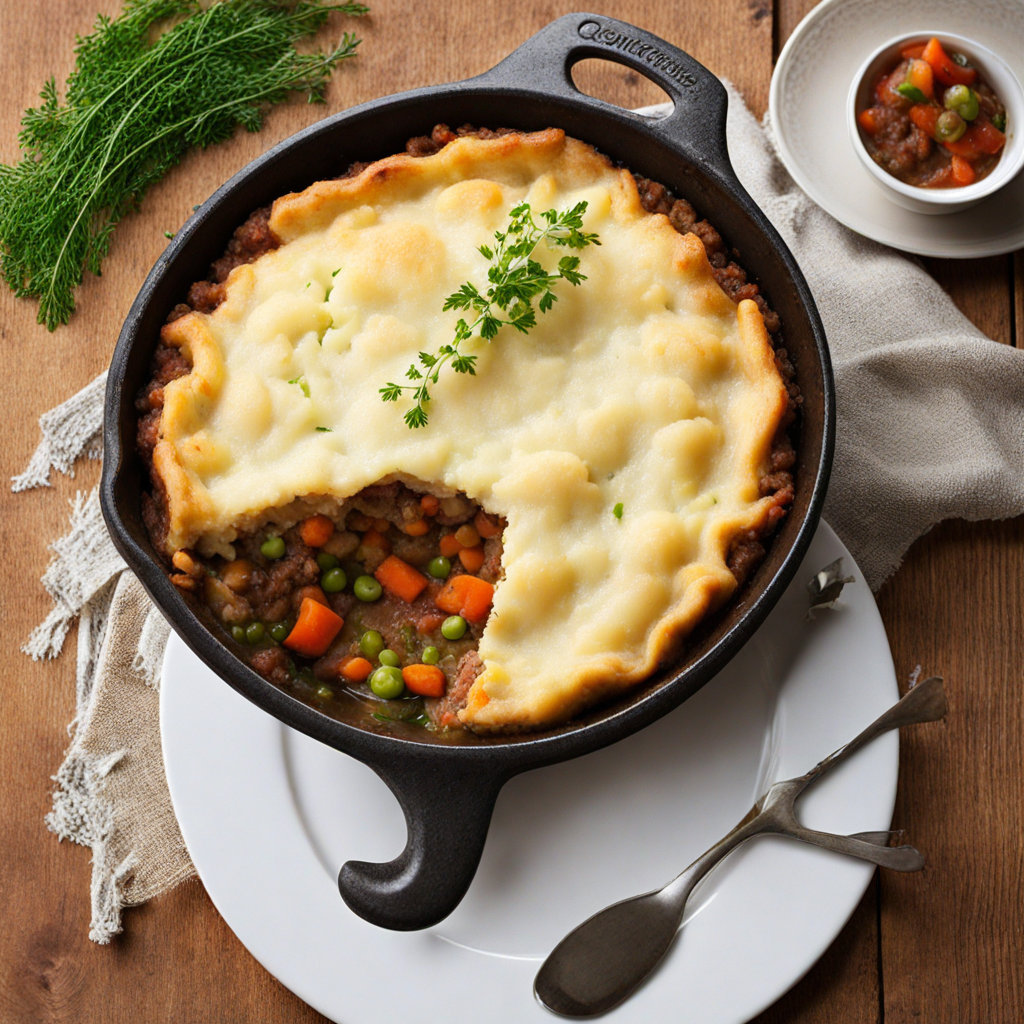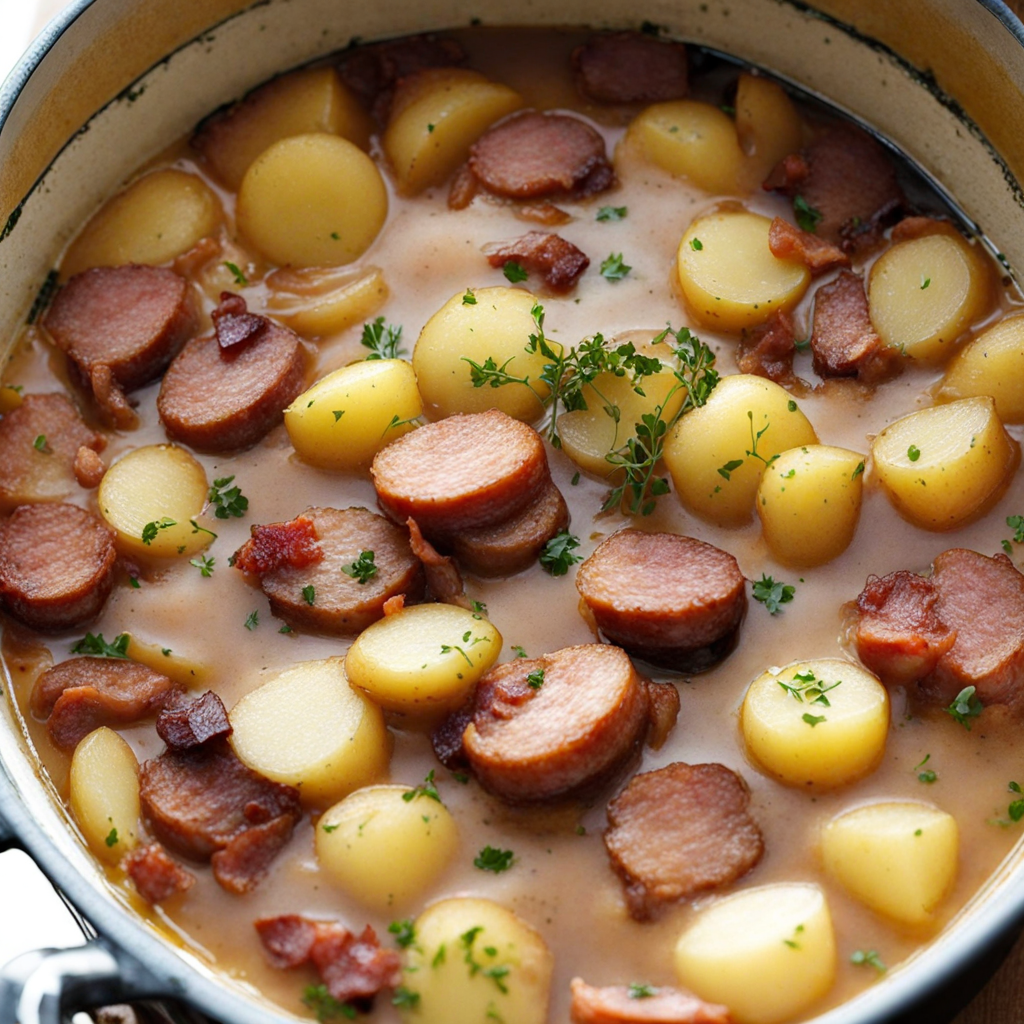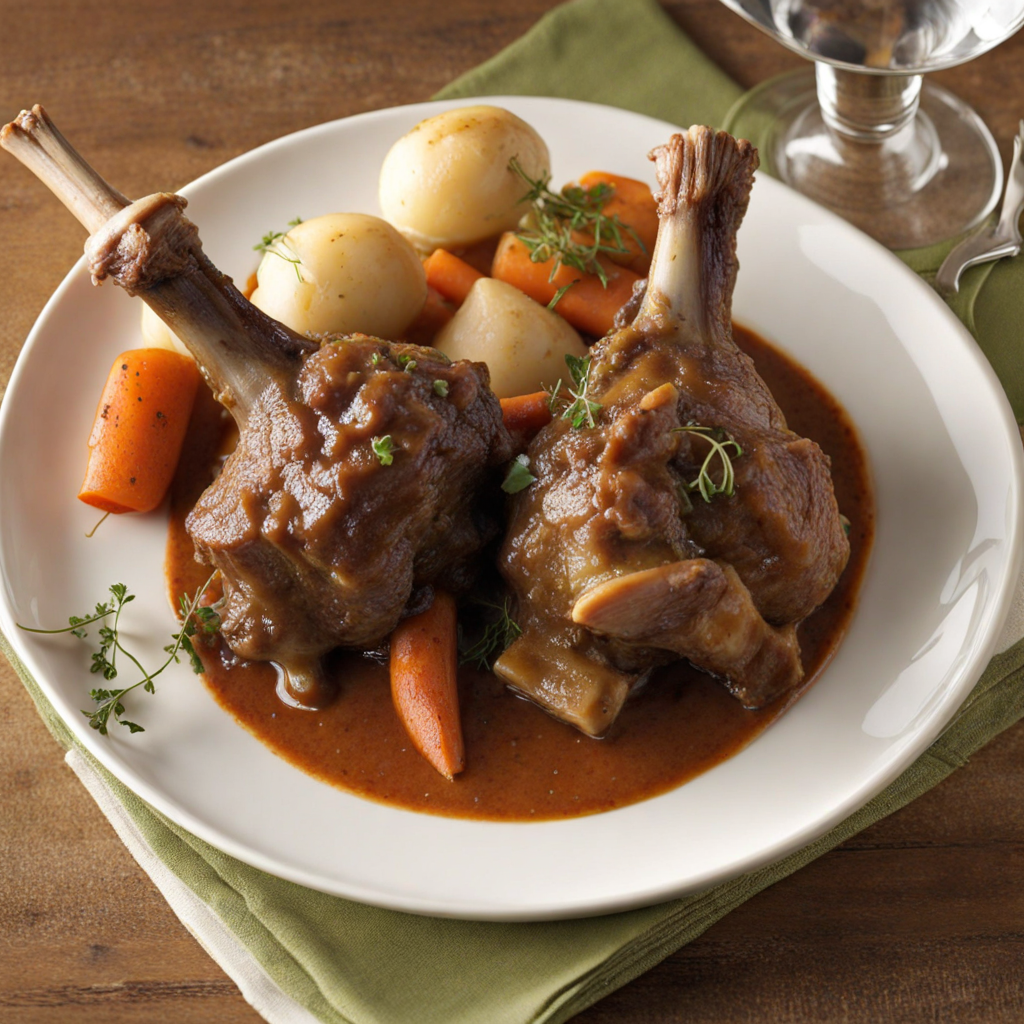Shepherd’s Pie
Shepherd’s Pie is a comforting and hearty dish that hails from the rolling hills of Ireland. At its core, it features a savory filling made from minced lamb, which is typically sautéed with onions, carrots, and peas. The blend of these ingredients creates a rich and flavorful base that is enhanced by the addition of herbs such as rosemary and thyme, which evoke a sense of rustic charm. The mixture is often simmered in a luscious gravy, allowing the flavors to meld beautifully, making each bite a delightful experience for the palate. The crowning glory of Shepherd’s Pie is its velvety topping of creamy mashed potatoes. The potatoes are usually boiled until tender and then whipped with butter and milk to achieve a smooth texture. This indulgent layer is spread generously over the meat mixture, often piped into decorative swirls to create an appealing presentation. When baked, the top develops a golden crust that contrasts perfectly with the tender filling beneath, inviting you to dig in. When you take a forkful of Shepherd’s Pie, you are met with a wonderful interplay of textures and flavors. The softness of the mashed potatoes complements the hearty meat filling, while the earthy notes from the vegetables and herbs enhance the overall taste. Each bite is a warm embrace, transporting you to the comfort of a cozy Irish pub or a family gathering around the dinner table. Shepherd’s Pie is not only a dish that satisfies hunger but also one that evokes a sense of tradition and homeliness, making it a must-try for anyone looking to explore Irish cuisine.
How It Became This Dish
Origin of Mairteoil Phíréasa Mairteoil Phíréasa, or "Pork of the Pigs," is a traditional Irish dish that has its roots deeply embedded in the agrarian lifestyles of rural Ireland. The dish typically features high-quality pork, often sourced from local farms, where pigs were raised in a free-range environment. This practice allowed the pigs to roam and forage, contributing to the unique flavor and texture of the meat. The name itself, derived from the Irish language, reflects the importance of pigs in Irish agriculture and culture, where they were often seen as a symbol of prosperity and sustenance. Historically, the consumption of pork in Ireland can be traced back to ancient times. Archaeological evidence suggests that pigs were among the first domesticated animals in Ireland, with their presence recorded as far back as 4000 BC. The Celts held pigs in high regard, believing them to be sacred animals. This reverence is evident in various aspects of ancient Irish mythology and folklore, where pigs often symbolize abundance and fertility. Mairteoil Phíréasa, therefore, represents not just a culinary tradition but a cultural artifact that embodies the deep connection between the land, livestock, and the people of Ireland. \n\n Cultural Significance Mairteoil Phíréasa occupies a special place in Irish culinary traditions, especially in rural communities where family gatherings and feasts often highlight this dish. It is typically prepared during significant celebrations such as weddings, anniversaries, and religious festivals, where it serves as a centerpiece for communal meals. The preparation of Mairteoil Phíréasa often involves traditional methods such as brining, curing, or smoking, which enhance the flavor and preserve the meat for longer periods. This dish also reflects the seasonal nature of Irish agriculture. Traditionally, the slaughtering of pigs would coincide with the onset of winter, ensuring that families had ample provisions during the colder months. The practice of preparing and preserving Mairteoil Phíréasa during this time is a testament to the resourcefulness of Irish communities, who relied on their agricultural bounty to sustain themselves through the harsh winters. As such, the dish is not merely a culinary delight but also a representation of resilience and adaptability in Irish culture. \n\n Development Over Time Over the centuries, Mairteoil Phíréasa has evolved, influenced by various social, economic, and culinary trends. With the advent of globalization in the 20th century, the dish has seen an infusion of new flavors and cooking techniques, leading to innovative interpretations while still respecting its traditional roots. In contemporary cuisine, chefs are experimenting with Mairteoil Phíréasa by incorporating spices and marinades from other cultures, reflecting the increasingly diverse palate of modern diners. Additionally, the rise in popularity of farm-to-table movements has rejuvenated interest in Mairteoil Phíréasa, as consumers seek locally sourced and ethically produced ingredients. This trend has revitalized traditional farming practices and encouraged a return to the fundamentals of meat preparation and preservation. Many artisanal producers now specialize in creating high-quality Mairteoil Phíréasa, using time-honored methods that honor the dish's legacy while catering to modern tastes. \n\n Regional Variations As with many traditional dishes, regional variations of Mairteoil Phíréasa have emerged throughout Ireland. In some areas, it may be prepared with specific herbs and spices unique to the region, reflecting local culinary traditions. For instance, in County Kerry, a favorite method involves slow-roasting the pork, allowing the flavors to develop over time, while in County Cork, the emphasis may be on a smoked version, imparting a distinctive depth of flavor. Moreover, the dish often finds its way into local festivals and events, where communities celebrate their culinary heritage through competitions and feasts. These gatherings not only promote Mairteoil Phíréasa but also serve to strengthen community ties and preserve traditional cooking practices. Such events are a vital part of maintaining the cultural significance of the dish, ensuring that it remains relevant for future generations. \n\n Modern Popularity Today, Mairteoil Phíréasa is experiencing a renaissance, with a growing number of restaurants and chefs highlighting this traditional dish on their menus. The resurgence of interest in Irish cuisine globally has introduced Mairteoil Phíréasa to a wider audience, prompting food enthusiasts to explore its rich flavors and cultural heritage. Food festivals in Ireland often showcase this beloved dish, allowing visitors to sample various preparations and learn about the history behind it. Additionally, the dish has become a staple in many households, where families are rediscovering the joy of cooking traditional recipes together. This revival is not only about nourishing the body but also about nurturing connections amongst family members and passing down culinary knowledge through generations. As more people embrace the values of sustainability and local sourcing, Mairteoil Phíréasa stands as a testament to the enduring nature of Irish culinary traditions. \n\n Conclusion In summary, Mairteoil Phíréasa is more than just a dish; it is a reflection of Ireland's agricultural heritage, cultural significance, and the adaptability of its cuisine. From its ancient origins to the modern interpretations found in kitchens and restaurants today, Mairteoil Phíréasa encapsulates the spirit of Irish food culture. As it continues to evolve while honoring its roots, this dish remains a flavorful symbol of community, tradition, and resilience in the heart of Ireland. The love for Mairteoil Phíréasa ensures that it will endure as a cherished part of Ireland’s culinary landscape for years to come.
You may like
Discover local flavors from Ireland







